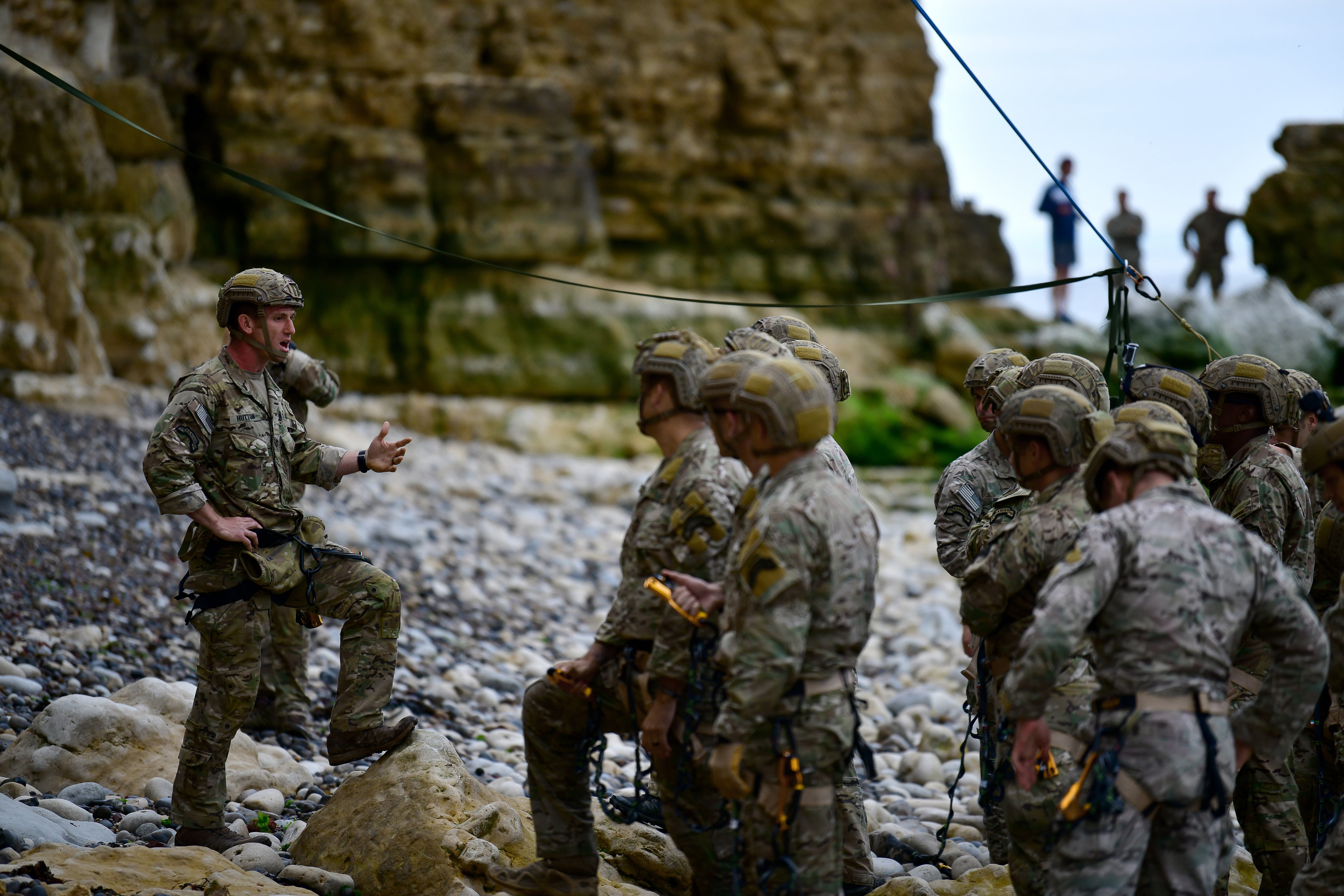If you take a look at a World War II-era cockpit, you’ll see a range of measures on how the aircraft is doing.
Fuel? Check
Altitude? Check
Speed? Check
An assortment of warnings and signals of all kinds are on display. That was nearly 80 years ago and before handheld digital computers.
Still, nothing quite like an informative dashboard exists for knowing how a soldier or Marine — or even how their squad — is doing.
An Army program called MASTR-E, or Measuring and Advancing Soldier Tactical Readiness and Effectiveness, is trying to create a human dashboard. The program wants to use that information to make troops healthier and better at everything from running to shooting to thinking in the midst of combat.
RELATED

That is the problem that George Matook, MASTR-E program manager, explained to reporters on a call Thursday.
Basically, the Army acknowledges that it’s going to be asking even more of its soldiers in future, Multi-Domain Operations combat. And the service needs better ways to know how well the human in the middle of all this high-tech gear is doing.
The team of researchers with the Army’s Combat Capabilities Development Command, Soldier Center, concluded a test-run, measuring a host of outputs of soldiers during a 72-hour field study in June with 75 soldiers from the 1-325th Airborne Infantry Regiment, 82nd Airborne Division, at Fort Devens, Massachusetts.
That event included three platoons that spent a few days letting researchers gather their “baseline” data, such as heart rate, stress levels and other biological and cognitive measurements.
Then the platoons conducted a three-day field mission. Researchers spent a few days following the mission, measuring how long it took those soldiers to rest, recover and get back to baseline.
Soldier Center researchers are using the data to build predictive modeling, which would help commanders better understand how to employ their soldiers and when to let them rest.
If Platoon A is hitting all reds in their fatigue status, while Platoon B is in mostly yellows and greens, then the commander might use that to decide who to send out next on patrol, Matook said.
A pilot of the program launched in 2018. The current effort began in 2020. Researchers have measured about 750 soldiers to gather performance and recovery data. That includes testing nutrition levels, blood and urine samples, cardiovascular conditioning, marksmanship performance and other factors.
A component of the program even measures close combat performance with on- and off-body sensors. Users can quantify a squad’s performance on movement to contact, eliminating threats and other variables. Then they adjust training accordingly.
The Tactical Stress Marksmanship portion also uses data and sensors to evaluate how well a shooter is doing under stress. They look at shooting in a near-peer or asymmetric environment that involves shoot/no-shoot scenarios, maneuver movements and how well the shooter communicates with other troops in contact.
Then there’s the Optimizing the Human Weapon System, which was built on a yearlong partnership with the 10th Mountain Division out of Fort Drum, New York. The partnership has been extended for another year. The OHWS looks at human performance, physiology and certain symptoms, which helps spot susceptibility to illness and injury.
The OHWS saw 560 soldiers participate and also evaluated measures for sleep qualities and exertion levels using wearables such as the Oura ring and Polar Grit X watch, according to an Army release.
All that information is fed into a database for large-scale evaluations and predictions.
The final field-type event is another 72-hour mission that will include a live fire. It is scheduled for May 2022.
Following that event and data collection, the program’s culminating field demo will be a long-term partnership through a unit’s training cycle.
*Correction: The article has been updated to reflect the correct pilot program and current program starting years.
Todd South has written about crime, courts, government and the military for multiple publications since 2004 and was named a 2014 Pulitzer finalist for a co-written project on witness intimidation. Todd is a Marine veteran of the Iraq War.








